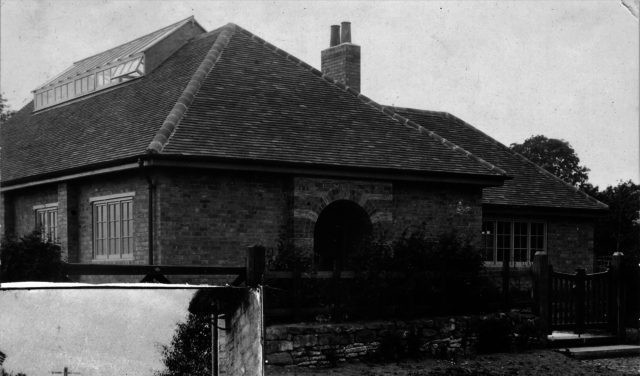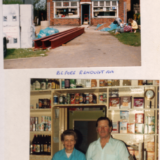VILLAGE HALL HISTORY 1921 to 1939
Village Hall History - 1921 to 1939
Click Here for Village Hall History – 1939 to 1945
Houghton on The Hill Village Hall was opened on 31 March 1921.
The first meeting of the organising committee was held on 8th April 1921 in the Schoolroom
The Village Hall shortly after opening in 1921
Tuesday nights, youngsters met in the Village Hall for country dancing.
Wednesday night was Whist Drive night.
Third Thursday of the month was the Women’s Institute meeting.
1923 Brew Day – The last Annual ‘Brew Day’ held before haymaking (originally organised by William Ward of Manor Farm)
Village Fete – (first week of August) started on the Village Hall field with some attractions (e.g. pony and carriage rides, clay pigeon shooting) taking place in the field beyond (where the houses of Charlottes Walk and Forsells End are now).
Funds raised divided between the Church and the Village Hall.
1934 The Cleansing Department of the Rural District Council took over the collection from household privvies.
Village Utilities
A mains water supply had arrived in Houghton in 1904 but surprisingly mains electricity did not arrive in Houghton until 1932. Prior to this, a private petrol generator behind the “Rose and Crown” supplied electricity to some houses in that area at 110 volts.
The late 1930s also finally saw the construction of a gas main along the A47 to Billesdon – a move which heralded the bringing of gas to the village. The Parish Council first explored the provision of this service with the Corporation of Leicester Gas Department in February 1936 and one of their representatives was invited to address the PC. He explained that the cost of any gas provided would be the same for heating, cooking and lighting. The original gas main in Houghton was finally laid in 1937/38 and was constructed of cast iron.
A village wide sewerage system was also introduced in the 1930s.
Village Construction
Another major change to the village that occurred during this period was the construction of houses and businesses along what is now the A47 and down Ingarsby Lane.
The businesses included two garages and a grocer’s shop, locally known as “The Top Shop”. In the 1930s, the “Top Shop” was owned by Mr and Mrs Clough – in those days it simply comprised a one storey, wooden hut – and they lived in the house next door.
A number of new houses were also built down Scotland Lane during this period.
1 September 1939
Enforcement of the blackout at the beginning of the war. Evacuees came soon after and were billeted in private houses. The blackout affected the church services resulting in Evensong being held in the Village Hall.
Extract From A History Of Houghton on the Hill
By kind permission of Huw Francis
Minutes of the meeting Held in the Schoolroom on the 8th April 1921.
- It was proposed by Mr Forsell and seconded by the Rev S J Winckley and Mr Spencer that Mr Black be appointed Secretary and Mr Herrick Treasurer.
- Also proposed and carried that the Joint Committee should be the General Committee and that they meet not less than twice per year. It was also proposed and carried that the following be appointed—Rev S J Winckley Chairman, J T Forsell Esq President. Vice Presidents Mr C F Spencer, Mr T Fielding and Mr J W Chapman and the above with the Secretary Mr J T Black and Treasurer Mr H J Herrick should be the executive Committee and that they be called together at any time to decide matters of importance or to arrange for any entertainments towards paying off the Debt.”



